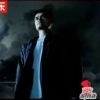Illustration:
ill. 4.12
Date:
1977
Genre:
poster, propaganda poster
Material:
scan, paper, black-and-white
Source:
Landsberger 1995: Landsberger, Stefan. Chinese Propaganda Posters: From Revolution to Modernization, Armonk, NY: M. E. Sharpe, 1995:27.
Courtesy:
IISH Stefan R. Landsberger Collection
Inscription:
红小兵
Keywords:
Mao´s words, In agriculture, learn from Dazhai, The Foolish Old Man, peasants, children, model for agriculture, model, Chen Yonggui
Little Foolish Old Men on the Fields of Dazhai (Dazhai you shang xiao yugong 大赛田上小寓公)

The Foolish Old Man’s story is closely connected with that of model village Dazhai 大寨. Since 1964, this rural brigade in Shanxi province had become the national model for agriculture. It had been “liberated” by the Communists and then successfully built upon most inhospitable ground. The Dazhai Production Team in Xiyang County was made a national model in 1964 when Mao Zedong issued the call, “In agriculture, learn from Dazhai” (农业学大寨).
Dazhai’s mythical success story is said to have been based on its participants’ self-reliance. Through bitter and painstaking work they were able to turn its infertile soil into productive land. Water had to be transported over many miles for irrigation, land was cleared in the mountains, and terraced fields were built that withstood drought and flood. By the early 1970s, Dazhai had become the benchmark for all agricultural production in China. There men, women, and children of all classes and backgrounds had worked together, as suggested in depictions of Dazhai such as this one which shows a group of Little Foolish Old Men on the Fields (大寨田上小愚公): children eagerly setting out to work to help create another miracle.
Accordingly, the Dazhai example had to be followed everywhere, regardless of local conditions. Daily, some 20,000 visitors passed through Dazhai to study this model of self-reliance. The project had its own special publication that thrived in the early 1970s, and Dazhai was cited in all different kinds of media well into the early 1980s.
The driving force behind Dazhai’s apparent achievements was Party Secretary Chen Yonggui 陈永贵 (1914–86), who had organized the villagers into teams to perform the backbreaking work needed to convert barren Dazhai into a showcase agricultural model for the nation. Chen himself was a typical model hero: active in revolutionary work since 1942, he headed the cooperativization movement in 1952. As chairman of the cooperative (later commune) and Party branch secretary, he was nominated model worker on the provincial (1957) and national (1964) levels.
Chen had been illiterate until the age of 43, but using Mao’s writings as a textbook, he became well-versed in Maoist revolutionary theory. From 1973 to 1980, he was a member of the Politburo, and from 1975 until 1980, he even served as one of China’s vice-premiers. Only when Deng Xiaoping succeeded Hua Guofeng in the late 1970s did the model status of Dazhai, and with it Chen Yonggui’s reputation, increasingly come under scrutiny.






































